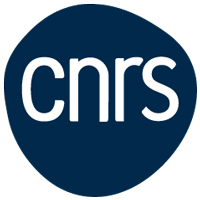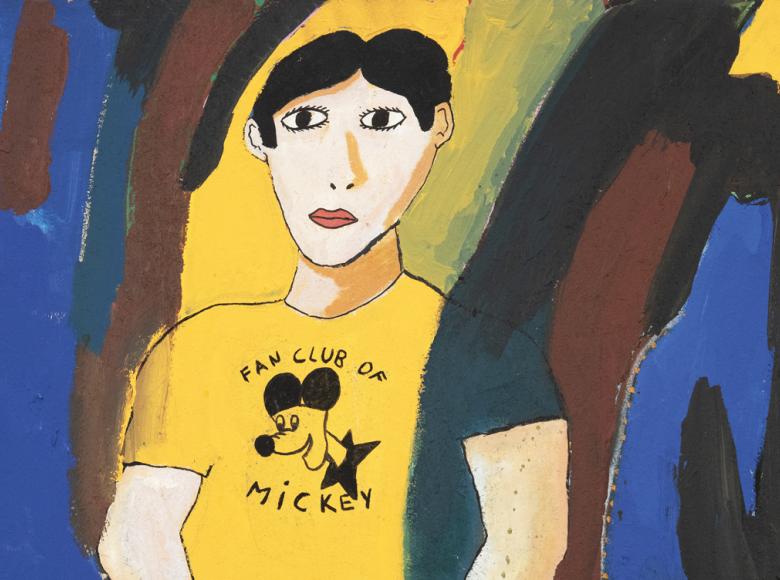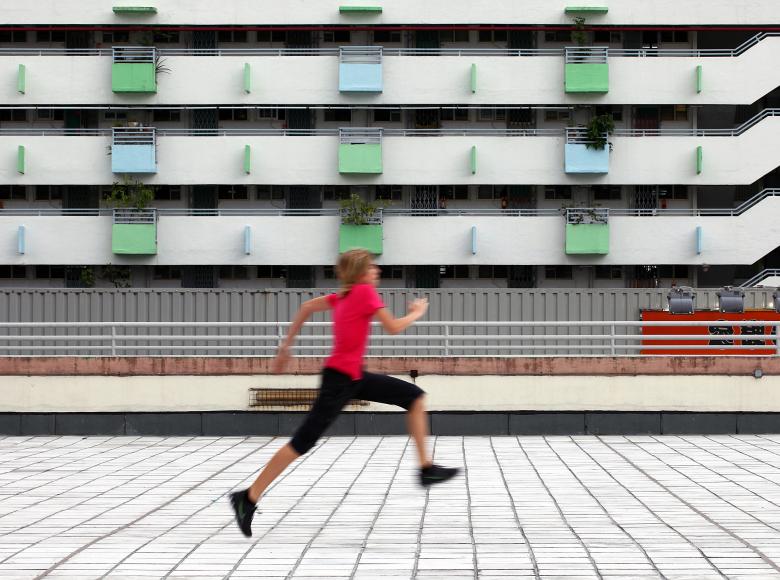MO.CO. Panacée
14 rue de l'Ecole de Pharmacie, Montpellier
15/02/25 > 18/05/25
Opening : 02.14.25 at 7pm
Prodrome, Pierre Unal-Brunet
After a season dedicated to contemporary figurative painting in France, followed by an exploration of the links between art and literature, MO.CO. Montpellier Contemporain is presenting three exhibitions this spring across its two art centers that delve into the relationships between art and science. This theme resonates with the history of the city of Montpellier, which has played a major role in education, the dissemination of knowledge, and scientific research.
Pierre Unal-Brunet was born in 1993 in France and lives between Paris and Sète. He collects inert materials, debris, and other surpluses of the world from aqueous harvesting areas. He assembles them to form object-beings in installations combining paintings, sculptures, and ink drawings. With an approach to evolution that borders on cryptozoology, his research draws on scientific articles from ichthyology (the study of fish) and marine biology, as well as on fantasies about these harvesting grounds. The result is a science-fictional environment inhabited by composite bodies.
With some thirty works created over the past five years, Prodrome is Pierre Unal-Brunet’s biggest solo exhibition to date. For MO.CO. Panacée, the artist is expanding his body of work, with the aim of altering how it is perceived and playing with the ways in which it is presented, thus allowing older species to surface in a new ecosystem..
The notion of eutrophication looms large in this complex and diffuse narrative. Eutrophication is the imbalance in aquatic environments caused by the increased presence of nitrogen and phosphorus. It is characterised by the growth of living organisms due to an excessive availability of nutrients. This excessive accumulation of biomass gradually saturates the ecosystem. Paradoxically, hyperfertilisation leads to the impoverishment and then the death of the biotope, which no longer disposes of the oxygen it needs to live. This phenomenon is also called the “asphyxiation of aquatic ecosystems.” A sort of bio-orgy prefacing extinction.
The exhibition follows this idea of gradual hypersaturation. In a spiral-like stroll through five chapters, each room is marked by a particular colorimetry, like a signal about the state of health of each of the biotopes visited. In this introspective narrative, punctuated by the poem Prodrome written by the artist, we move from crystalline calm to acid exuberance.
In an ever-changing system, Prodrome takes a speculative look at the evolution of species, imagining the unknown based on known clues.
Beyond our emotional relationship with ecological phenomena, the exhibition invites us to shift our self-centred gaze. In this way, Prodrome draws out the possibilities of co-evolution, thanks to the ambivalence of empathy—often selective—from antidote to harmfulness, or regeneration after decline.
Curator of Art & Science season : Pauline Faure, Anya Harrison, Alexis Loisel-Montambaux, Deniz Yoruc.



Catalogue

Prodrome is complemented by a catalogue featuring numerous exhibition views and details of the works. The graphic design was entrusted to Clément Gicquel. Like the exhibition, the catalogue is organized in stages, following a gradual hypersaturation.
It includes an interview between Pierre Unal-Brunet and Alexis Loisel-Montambaux, a walk with commentary by the artist, his poem Prodrome, iconographic sources, and a central section dedicated to the dessins parasites (parasitic drawings).
Publisher: MO.CO. Montpellier Contemporain
Authors: Numa Hambursin, Alexis Loisel-Montambaux, Pierre Unal-Brunet
Graphic design: Clément Gicquel
Format: Hardcover (24 x 17 cm)
Language: French
176 pages
Price incl. VAT: €28.00
Publication: 15/05/2025
Comité scientifique
In partnership with l’Université de Montpellier
Université de Montpellier
Pr. Agnès Fichard-Carroll
Vice-Présidente Formation et Vie Universitaire Université de Montpellier
Professeure de neurosciences.
Pr. Isabelle Laffont
Doyenne de la Faculté de Médecine Montpellier Nîmes
Professeur des Universités- Praticien Hospitalier (Médecine Physique et de Réadaptation)
CHU de Montpellier et CHU de Nîmes
Sciences du Mouvement Humain – Euromov Digital Health In Motion – Université de Montpellier
Pr. Gérald Chanques
Vice-président de l’Université de Montpellier délégué au Patrimoine Historique
Vice-doyen aux affaires générales, au patrimoine et à sa valorisation, à la vie de campus, de la Faculté de Médecine Montpellier-Nîmes Professeur des Universités - Praticien Hospitalier (Anesthésie - Réanimation), Département d'Anesthésie Réanimation de l'Hôpital Saint Eloi (CHU Montpellier) Unité de recherche : PhyMedExp, INSERM, CNRS, Université de Montpellier
Pr. Stephan Matecki
Vice-doyen, président du conseil scientifique Université de Montpellier
Physiologiste, responsable de l’Unité d’Explorations Fonctionnelles Pédiatriques et d’une équipe de recherche au sein de l’Unité UMR CNRS 9214-INSERM U1046. Co-responsable du Master Biologie-Santé.
Benoit Charlot
Directeur de recherche CNRS
IES Institut d’Électronique et des Systèmes, UMR 5214 CNRS Université de Montpellier.
Equipe Biomicrofluidique et Biophotonique
Caroline Ducourau
Directrice de la culture scientifique et du patrimoine historique, Université de Montpellier
Conservatrice du patrimoine
Muriel Guedj
LIRDEF (Laboratoire Interdisciplinaire de Recherche en Didactique, Éducation et Formation), Université de Montpellier
Chercheure associée GHDSO (Histoire et Diffusion des sciences) EST, Université Paris Saclay
Gabriel Krouk
Directeur de recherche CNRS
Institut des Sciences des Plantes de Montpellier (IPSiM) - Unité Mixte de Recherche (CNRS/INRAE/Institut Agro/Université Montpellier) co-fondateur et directeur scientifique d'une start-up, BionomeeX ©
Ariane Abrieu
Directrice de Recherche BIOLuM (BIOcentre Lunaret Montpellier)
Aurélie Bessière
Chargée de recherche CNRS, Institut Charles Gerhardt de Montpellier (ICGM)
Jean-Olivier Durand
Chercheur CNRS, co-fondateur et conseiller scientiffique de NanoMedSyn
Chercheur à l’Institut Charles Gerhardt Montpellier (ICGM)
Vincent Ladmiral
Directeur de recherche CNRS, Institut Charles Gerhardt Montpellier (ICGM) - Chimie & Matériaux MacroMoléculaires , CNRS, ENSCM, Université de Montpellier.
> Groupe COSA - Institut Charles Gerhardt Montpellier (ICGM), l’Institut d’Électronique et des Systèmes (IES), l'École Nationale Supérieure d'Architecture de Montpellier
(Ensam) et l'École Supérieure des Beaux-Arts Montpellier Contemporain (MO.CO Esba) (Groupe de Recherche et expérimentations Sciences et Art)
Eléonore Szturemski
Responsable du Service art & culture, Direction vie des campus, Université de Montpellier
MO.CO. Montpellier Contemporain
Agnès Robin
Vice-présidente de l’Epcc MO.CO Montpellier Contemporain, adjointe au maire à la culture Ville Montpellier
Maître de conférences à l’Université de Montpellier
Numa Hambursin
Directeur général de MO.CO. Montpellier Contemporain
Delphine Goutes
Directrice coordination générale et partenariats
Pauline Faure, Anya Harrison, Alexis Loisel-Montambaux, Deniz Yoruc
Commissaires des expositions
Stéphanie Delpeuch
Directrice des publics
Other scientific partnerships
Avec le regard et les conseils de Nicolas Mouquet, Chercheur au CNRS, Université de Montpellier, directeur scientifique du Centre de synthèse et d’analyse sur la biodiversité (Cesab).
Joey Holder – Collaboration avec Benoît Charlot, Directeur de recherche CNRS. IES Institut d’Electronique et des Systèmes (CNRS UM 5214), Université de Montpellier.
Booklet




